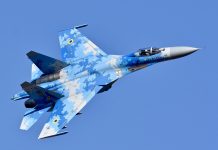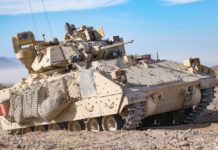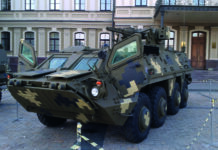Approaches to military operations are constantly changing, requiring military hardware to the adapt to the new conditions on the battlefield. Among the current trends are the need for the flexible reconfiguration of hardware under conditions of irregular warfare, the ability to withstand weapons used by rebels such as improvised explosive devices and anti-tank mines, and the ability to function in urban areas. Armies want their combat vehicles to be both mobile and fast.
As a result, many modern military operations use light and medium-weight armoured vehicles that are constantly being upgraded. Examples of such upgrades include a mine-proof V-shaped hull, a general improvement in crew survivability, a reduction in the vulnerability of wheeled vehicles through the use of a central tyre inflation system, and improved communications and situational awareness.
The use of hybrid drives in light armoured vehicles raises many questions, the most important being when will armies make massive use of them and whether they will do so at all. After all, such engines can be used to address issues of fuel consumption and mobility. The decisive advantage of hybrid and electric engines is also that they are much quieter than conventional diesel and gasoline engines, which could be crucial for covert manoeuvres in combat operations. Another important advantage is the ability to operate the energy-intensive sensors without having to start the diesel engine.
Experts appreciate several key features of electric power units. These include high efficiency and reliability, in contrast to mechanical units, as well as lower fuel consumption and increased vehicle agility. In addition, the possibility to replace an engine with electrical power sources and fixed mechanical parts – with flexible cables – opens up the scope for further modifying the vehicle’s design according to its intended purpose.
Today’s armored vehicles face a number of challenges that can be solved with the introduction of electric engines. First, of all, the weak point of these vehicles is the mechanical shaft that drives the wheels. It must run along the vehicle floor and limits the underbody protection. Indeed, most fatalities were caused by roadside IED explosions in Iraq and Afghanistan. Another drawback of modern technology is that it is poorly adapted to the growing number of energy-consuming sensors and systems that are creating new electrical burdens.
Hybrid or All-Electric
These problems are to be solved by means of vehicles with hybrid or electric drive. The replacement of mechanical elements by more flexible and lighter electrical systems will make vehicles more mobile and allow for the better placement of the armour. In addition, the electric drive does not require a mechanical drive shaft, which allows the design to be changed in order to provide better protection against IEDs.
The electric engine is seen as a key element for the future introduction of complex sensors and electronics in combat vehicles; it will be more organically linked to such systems than to mechanical ones and will simplify the integration of AI technology. This will allow for the creation of ‘intelligent’ combat vehicles, which will ensure better situational awareness and response to incoming threats.
The first public test of hybrid technologies took place in 2005 when the US Army’s National Automotive Center and BAE Systems announced the development of the first armored hybrid electric tracked vehicle, a 15-ton prototype M-113 with hybrid drive. At that time, a battery was used to meet short-term energy requirements for acceleration, steering and uphill driving. The vehicle was powered by an additional battery pack. At that time, however, the prototype had to undergo a series of tests to prove its survivability and superiority in combat.
The Pentagon has shown a great interest in hybrid vehicles, solar energy, and other clean energy sources. For the US Department of Defense, the construction of a new generation hybrid combat vehicle is a matter of saving valuable budget funds in an era of tightening budget policies.
First Developments
In 2012, there were reports in the US about the development of the first armoured infantry fighting vehicles with hybrid drive. The project, led by BAE Systems and Northrop Grumman, involved the use of the MTU883 Hybrid Electric Drive as the main diesel engine, using the 1,100 kW Hybrid Electric Drive transmission from the UK manufacturer QinetiQ. At the time, it was estimated that fuel consumption could be reduced by 10-20% depending on the type of operational terrain. At the same time, around 17.5 litres of fuel were consumed per hour when idling, which is 20 litres less than with a conventional engine.
Back then, BAE Systems and Northrop Grumman Corporation began developing IFVs under the GCV (Ground Combat Vehicle) project. In addition to the advantages of the hybrid drive – i.e. the simple design and lower weight – the project had a number of other advantages too, including better dynamics and better protection. The disadvantage, however, was the cost of the project, which was five times the cost of the M2 Bradley IFVs in service with the US Army.
Meanwhile, research continues regarding the latest electric drive systems for future armoured and robotic vehicles. To date, however, electric batteries are unable to produce the required level of energy needed to move a 60-tonne tank.
Andrew Holland, Programme Director of the American Security Project, a Washington-based think tank, believes that the latest developments in battery technology make it possible to consider electric and hybrid light armoured vehicles as feasible for the military. In recent years, he says that modern technologies have made a leap forward. Batteries are becoming cheaper, better and lighter – and this is happening much faster than previously expected. Inevitably, the charging process will also be much faster, which will eliminate the issue for military vehicles at a tactical level.
In the future, eliminating the main engine will bring a number of benefits to the military, such as the use of one electric motor per wheel to better distribute weight and maintain mobility when one of the engines fails. Electric motors also provide much higher torque than a diesel or gasoline engine when needed.
Ongoing Research
Today, programmes have been launched at different levels to develop and further introduce new types of light armoured vehicles. These are both national programmes and initiatives introduced by private defence companies. A prominent US project titled ‘Next Generation Combat Vehicle’ (NGCV) is designed to replace the US Army’s key IFV, the M2 Bradley. Taking military requirements into account, the project implies a crew of two with space for six paratroopers on board and high mobility to be provided by a 1,000 hp engine, combined with passive and active protection and a remote weapon station with a 50mm automatic gun.
The Project places a key focus on the use of modern technologies and materials. In particular, designers are considering alternative energy for their NGCVs, including through hybrid and all-electric power units. Another necessary element is noise reduction thanks to the electric drive and a battery to control vehicle systems without having to start the engine. This will enable the vehicle to be deployed in a wider spectrum of missions.
The main focus in the modernisation of new NGCVs will, therefore, be on the further introduction of modern electrical engineering. According to the terms of the programme contract, the hardware is to be operational by the end of 2022 and tested in 2023.
In 2017, Israel began field tests with a new hybrid power source for tanks and armoured vehicles. This involved advanced rechargeable lithium-ion batteries developed by Epsilor-Electric Fuel in cooperationn with the Israeli Ministry of Defence and operationally supported by Merkava (Israel) as well as most other major battle tanks and armoured vehicles worldwide. According to the developers, the batteries will be able to operate at high capacity for 12 hours without being recharged. This will allow operations at night without the need to switch on the main engines, i.e. to carry out the so-called ‘Silent Watch’ missions with power-hungry surveillance, targeting and communication systems. This significantly reduces the likelihood of being detected and attacked by the enemy.
The UK has also been working on developing electric drive systems for future tanks. The Defence Defence Science and Technology Laboratory (DSTL), the UK equivalent to the US DARPA military research agency, has launched an electric vehicle project worth US$4.1M. According of Chief of Staff, Sir Mark Carleton-Smith, the current fleet of military vehicles could be the last generation to run on fossil fuels. He believes that we may well be seeing the end of combat vehicles powered by traditional fuels.
In 2010, the USA decided that its army needed an ultra-lightweight combat vehicle (ULCV). At that time, the Office of the Department of Defense and DARPA appointed the Tank Automotive Research, Development & Engineering Center (TARDEC) as the executive body for the ultra-lightweight combat vehicle program. This led to the creation of a prototype for a hybrid drive. The vehicle is equipped with a 175 HP Subaru boxer turbo diesel engine. American Traction Systems Remy-410HVH HT traction motors turn the wheels that drive the UQM-200 phase generator and inverter.
TARDEC, together with several US defence companies, built and tested three ULV prototypes. Their hybrid power unit received wide appraisal. The system, consisting of a diesel and two electric engines, allowed for high running performance and provided the required level of sustainability. Two relatively compact electric motors left enough space for the unique mine-resistant bottom shape without vulnerable spots. Besides, the vehicle also retains mobility if one of the engines fails. The level of ULCV development, against that of heavier and armoured hybrid combat vehicles, suggests it is more likely to appear in the army earlier than other new types of military equipment.
According to the online military magazine Defence Blog, researchers with the US Army Combat Capability Development Command Ground Vehicle Systems Center (GVSC) and US Army Research Laboratory are developing combat vehicles, including MBTs and IFVs, powered by hydrogen fuel cells. The hydrogen fuel cell system produces no smoke, noise, or odour, boasting a number of acoustic and thermal advantages, as well as high torque. New fuel cells are more energy efficient than internal combustion engines.
A hybrid system is by far the most realistic one to appear in the army in the near future, since fully eliminating diesel or gasoline engines will hardly be ‘at the table’anytime soon for military vehicles operating in combat. It is primarily about logistics. The key criterion is time required for pumping a full tank and fully charging a modern car battery. In any case, everyone has long since stopped regarding electro traction as a ‘technology with promising future.’ The main question today is when it will be used in military hardware.
Alex Horobets is an analyst for international and Arctic affairs based in Kyiv, Ukraine.











